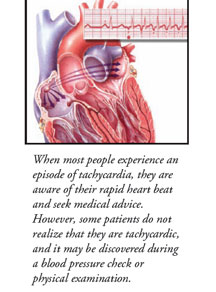
A Healthy Heart Beats in a Regular Rhythm
Osteoporosis affects 44 million Americans, including 10 million people who have been diagnosed with the disease. In addition, 33 million persons are at high risk due to their low bone density. Osteoporosis is a condition in which the bone tissue weakens and becomes more likely to fracture. It occurs most often in people over age 50, when one of every two women and one of every four men will have a fracture as a result of this bone weakening. As the population in the US ages, osteoporosis is rapidly becoming a serious health problem, with a cost estimated at $17 billion a year and growing. The best treatment for osteoporosis is prevention. Prevention begins with changes in lifestyle that can help reverse bone loss and prevent continued bone weakening. One of the most important ways to keep bones strong is to take in enough calcium and vitamin D to prevent calcium from leaving the bone tissue.This can be done through a diet rich in calcium, regular exposure to the sun, calcium/vitamin D supplements if necessary, daily weight-bearing exercise, avoidance of smoking and excess alcohol, and bone density testing when appropriate.
Tachycardia Has Many Causes
In emphysema, the walls of the air sacs (alveoli) break down and these sacs become enlarged. Oxygen and carbon dioxide are exchanged in the lung through these air sacs, and when they become permanently destroyed, it becomes difficult for oxygen to reach the bloodstream. At the same time, the elastic fibers which help the lungs expand and contract during breathing are slowly destroyed. Without this elasticity, it becomes difficult for patients to exhale.
Primary Symptoms:
The primary symptom in patients with emphysema is shortness of breath. In the beginning, this is a problem most patients notice during exercise or activity. Eventually, even simple tasks like walking up stairs become difficult due to shortness of breath. Many patients with emphysema also suffer from chronic bronchitis, which causes a productive cough. Emphysema is diagnosed after physicians take a complete history of the patient’s symptoms and complete a thorough physical examination. The physician may order a chest x-ray to visualize the structure of the lung tissue. Pulmonary function tests (PFTs) are used to measure the breathing ability of the lungs. Patients may also be tested for alpha 1-antitrypsin deficiency in the blood, especially if symptoms of emphysema begin before the age of 50. These patients can be given an alpha 1-proteinase inhibitor drug to reverse their genetic deficiency.
Treatment:
The treatment of emphysema is aimed at relieving symptoms while slowing the destruction of alveoli. It is very important for patients with emphysema to maintain general good health in order to avoid respiratory infections, which can worsen their symptoms. This means patients must follow a healthy diet and maintain a certain level of activity. Although these are not easy goals for a patient who must work hard to breath, they are critical to maintain respiratory and muscle strength. When first diagnosed, the cause of the emphysema is determined and exposure to any lung irritants is avoided. This means patients who smoke must stop. All environmental pollutants must also be avoided, such as air pollution or workplace irritants. Patients can help avoid respiratory complications by receiving the influenza vaccine each year. Patients should also receive the pneumococcal pneumonia vaccination once, and then repeat this vaccination once, six years later.
Bronchodilator Drugs:
Drugs that help open bronchial passageways and ease breathing are known as bronchodilators. In most patients with emphysema, however, these drugs are only somewhat effective. Bronchodilating drugs include albuterol, pirbuterol, metaproterenol, and terbutaline. These are usually given by oral inhaler. Theophylline and ipratropium are also bronchodilators, but they work by different mechanisms to help make breathing easier. Since many of these bronchodilators work differently, they can be used together to increase their effectiveness.
Other Therapies:
A number of patients with chronic lung disease may show improvement from use of corticosteroids, given either by mouth or by oral inhaler. These drugs should only be used if they lead to an improvement in pulmonary function tests. Sometimes corticosteroids are prescribed for a short time if symptoms worsen, and then discontinued. Antibiotics are also used in patients with respiratory infections that cause an increase in cough, shortness of breath, or fever. Oxygen therapy is used in patients with disabling emphysema who are unable to do simple tasks without feeling short of breath. The type of oxygen delivery system and the rate of oxygen delivery are prescribed based on each individual patient. Single lung transplants are the end resort for patients who are candidates for such surgery.






